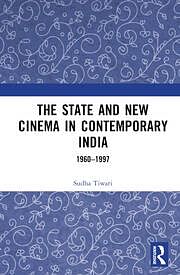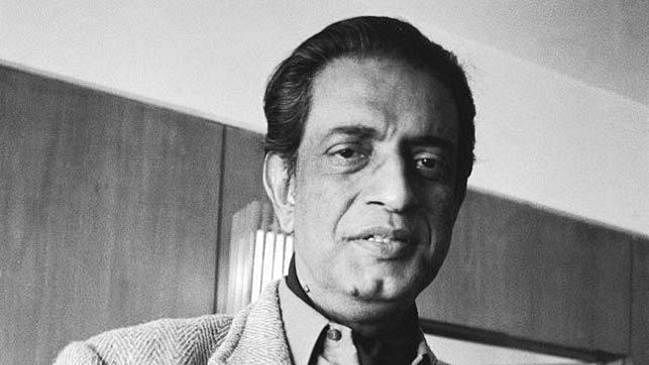The desire to have a ‘world class’ cinema, reflecting an Indian ethos, existed among young filmmakers since the time of India’s independence. Such a desire, with a touch of disappointment, was expressed in an essay written by Satyajit Ray. Written a year after India’s independence, the essay first appeared in the Calcutta Statesman in 1948. The essay clearly pleads for either having a parallel filmmaking practice along with the Bombay-based Hindi cinema or to even change how Indian cinema looked in general.
In the essay, Ray lamented the condition of Indian cinema and asked why it is never shown outside India. Calling cinema “the century’s most potent and versatile art form”, he questioned the quality of Indian cinema made at that time. Ray snubbed the excuses given by the producers, technicians, and directors preventing them from making a diverse kind of cinema. He wrote, “The producers will tell you about the mysterious entity ‘the mass’, which ‘goes in for this sort of thing’, the technicians will blame the tools and the director will have much to say about the wonderful things he had in mind but could not achieve because of ‘the conditions’.” According to him, “better things have been achieved under much worse conditions”. Giving the example of the internationally acclaimed post-War Italian cinema, he found the reasons in the fundamentals of filmmaking in India. According to Ray, the elementary confusion whereby the Indian film industry equated movement, “the all important function of cinema”, with action and action with melodrama, and the influence of the American cinema were the two main factors responsible for the poor state of affairs in the Indian film industry. He argued that Indian cinema did not need gloss, but needed more
imagination, more integrity, and a more intelligent appreciation of the limitations of the medium…What our cinema needs above everything else is a style, an idiom, a sort of iconography of cinema, which would be uniquely and recognizably Indian…the truly Indian film should…look for its material in the more basic aspects of Indian life, where habit and speech, dress and manners, background and foreground, blend into a harmonious whole.
Ray needed “Indianness” in Indian cinema. For Ray, only a drastic simplification of style and content could bring some hope for Indian cinema. But the then existing practices – starting a production without adequate planning and sometimes without a shooting script, lack of a strong, simple, and unidirectional narrative, and forcing musical numbers into films – went against such simplification and stood “in the way of the evolution of a distinctive style.” He cited two films showing “rare glimpses of an enlightened approach”. The Indian People’s Theatre Association’s (IPTA) Dharti Ke Lal (1946, K.A. Abbas) was, according to Ray, “an instance of a strong simple theme put over with style, honesty and technical competence.” Uday Shankar’s Kalpana (1948) was “an inimitable and highly individual experiment”, which showed “a grasp of filmic movement, and a respect for tradition.” He wondered, “It is incredible that a country which has inspired so much painting and music and poetry should fail to move the film-maker.” Ray put high emphasis on an iconography of cinema uniquely Indian, reflecting Indian ethos and Indian life. He attacked American cinema’s influence and praised Italian neorealism. He asked for less glamour and more content, and demanded simplification of style with an adequately planned production and shooting schedule. The then 27-year-old Satyajit Ray, who was already active in the film society movement in Calcutta, wrote a very important proposition for a New Cinema in India.
Before discussing the Report of the Film Enquiry Committee, I wish to briefly refer to a PhD thesis written on Indian cinema in as early as 1950. Written by Panna Shah, and submitted at the Department of Sociology, University of Bombay, the thesis put the film producers at the centre of the debate, who were
like a conglomeration of many adventurers each going his own way…Many of them have no knowledge of the art of the cinema and merely take to film production in the hope of minting money. We have too many independent producers whose failures, and often unscrupulous business methods, have brought general discredit to the industry…Such individual enterprise without any organizational basis is probably one of the greatest weaknesses of the film industry in India.
The presence of ‘adventurist’ film producers, the producer’s forced reliance on a film financier, or distributor for finances, and a lack of financial resources were other problems coming in the way of progress for Indian films. Exorbitant rates of interest on the money borrowed for production, and financiers not willing to invest in the “risky” motion picture industry, were some of the reasons for a general lack of financial support. According to Shah, “This crippling financial bogey can only be overcome by the establishment of a sound Film Corporation willing to loan capital at reasonable rates of interest.” He stressed the need of having the producers, directors, scriptwriters, and technicians trained, and establishing a Film Institute and Council on the lines of the Cinematograph Council of Great Britain. He was optimistic about its possibilities, “There is no reason why such a system, if intelligently and impartially administered, should not be successful in this country. It would go a long way in achieving a higher standard of films in the new India.” While Ray asked filmmakers to make the most of the existing situation and produce a better and more distinctive cinema, Shah wanted the state agencies to come to the rescue of the independent producers and the film industry in general. They both, and many others, desired a common thing: “a higher standard of films in the new India.”
Though the British colonial government had taken an interest in Indian films, they did not do much to develop the indigenous Indian film industry. Rather, they allowed films from Britain and the USA to dominate film demand in India. The colonial regime also used censorship to prevent Indian filmmakers from making certain kinds of films and controlled the content of these films. They instituted an Indian Cinematograph Committee in 1927, under the chairmanship of T. Rangachariar, to study and survey the condition of the Indian film Industry. The Recommendations were put into cold storage. Certainly, after independence, the film industry expected the government to
recognize it as a legitimate industry and to grant it the infrastructural and credit support that the economic policy promised for other industries. In return, the film industry offered to serve as an instrument of public instruction or, as I. K. Gujral, Indira Gandhi’s Information and Broadcasting Minister, was to describe later, to pay a ‘social tax’ in the form of socially relevant, progressive themes and messages.
The first government of the newly free India, under Jawaharlal Nehru, was aware of the importance of films in its nation-building and modernising mission. The FD was already set up in 1948, to make the ‘new citizens’ aware of various developmental work done by the Indian state. Yet, it needed more coaxing to take interest in the feature film industry, which needed large scale reforms as upheld by Shah’s research as discussed above.
 This excerpt from The State and New Cinema in Contemporary India by Sudha Tiwari has been published with permission from Informa UK.
This excerpt from The State and New Cinema in Contemporary India by Sudha Tiwari has been published with permission from Informa UK.







Everything is wrong with Indian cinema. It’s just mindless violence and soft porn masquerading as “romance” nowadays.
One wonders what Mr. Ray would have thought of modern Indian cinema.
Resources are not really a limitation nowadays. Yet all we have is sleaze and soft porn, idiotic and perverse violence, coupled with all sorts of colourful profane langauge. This is what Indian cinema has been reduced to.
The other day, The Print reporter Mr. Krishan Murari published an article praising the profanity laden language, sex and violence of OTT shows claiming that this represents “real Hindustan”.